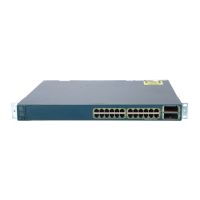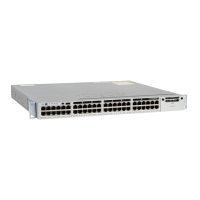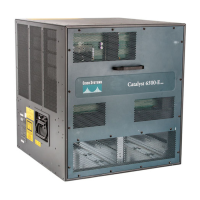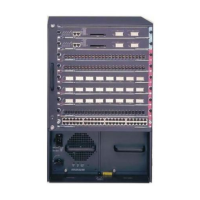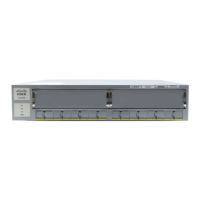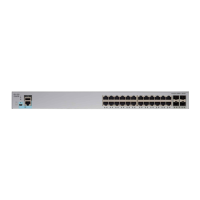30-26
Catalyst 3560 Switch Software Configuration Guide
78-16156-01
Chapter 30 Configuring IP Unicast Routing
Configuring IGRP
Note For more information and examples, refer to the Cisco IOS IP and IP Routing Configuration Guide for
Release 12.1.
Configuring Basic IGRP Parameters
Beginning in privileged EXEC mode, follow these steps to configure IGRP. Configuring the routing
process is required; other steps are optional:
Command Purpose
Step 1
configure terminal Enter global configuration mode.
Step 2
router igrp autonomous-system Enable an IGRP routing process, and enter router configuration mode. The
AS number identifies the routes to other IGRP routers and tags routing
information.
Step 3
network network-number Associate networks with an IGRP routing process. IGRP sends updates to
the interfaces in the specified networks. If an interface’s network is not
specified, it is not advertised in any IGRP update. It is not necessary to have
a registered AS number, but if you do have a registered number, we
recommend that you use it to identify your process.
Step 4
offset list [access-list number | name]
{in | out} offset [type number]
(Optional) Apply an offset list to routing metrics to increase incoming and
outgoing metrics to routes learned through IGRP. You can limit the offset
list with an access list or an interface.
Step 5
neighbor ip-address (Optional) Define a neighboring router with which to exchange routing
information. This step allows routing updates from RIP (normally a
broadcast protocol) to reach nonbroadcast network.
Step 6
metric weights tos k1 k2 k3 k4 k5 (Optional) Adjust the IGRP metric. By default, the IGRP composite metric
is a 23-bit quantity that is the sum of the segment delays and the lowest
segment bandwidth for a given route.
• tos—Type of services; the default is 0.
• k1-k5—Constants that convert a metric vector into a scalar quantity.
Defaults for k1 and k3 are 1; all others are 0.
Step 7
timers basic update invalid holddown
flush [sleeptime]
(Optional) Adjust routing protocol timers.
• update—The time (in seconds) between sending of routing updates.
The default is 90 seconds.
• invalid—The timer interval (in seconds) after which a route is declared
invalid. The default is 270 seconds.
• holddown—The time (in seconds) during which routing information
about better paths is suppressed. The default is 280 seconds.
• flush—The time (in seconds) that must pass before a route is removed
from the routing table. The default is 630 seconds.
• sleeptime—Interval in milliseconds for postponing routing updates.
The default is 0.
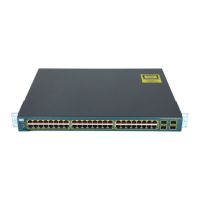
